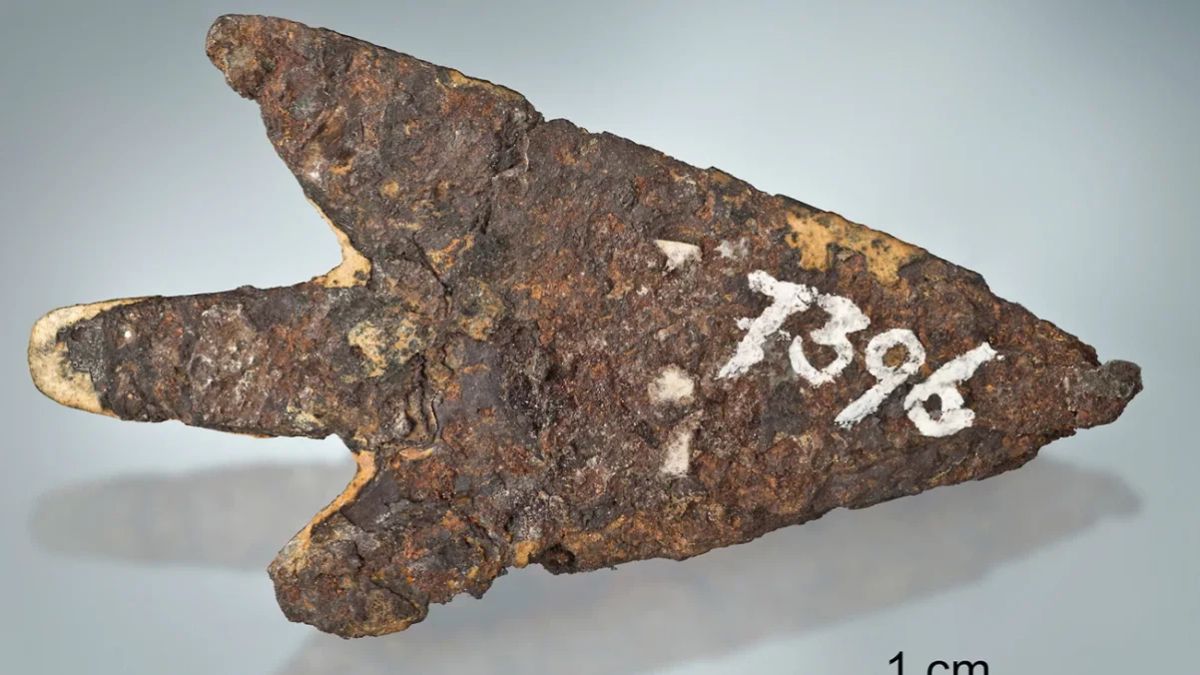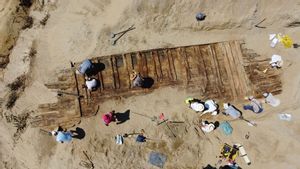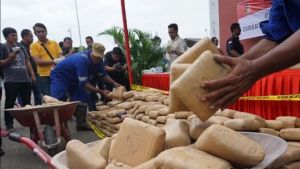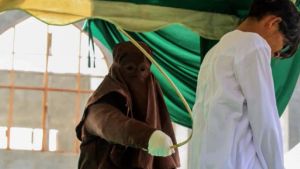JAKARTA - An arrow that is thought to have originated in the Bronze Age and is made of meteorites, was found in Switzerland according to a recent study.
Derived from 900 and 800 BC, 39-millimeter (1.5-inch) arrowheads were found on pile sites in Murtaigen, Lake Biel, Switzerland during excavations in the 19th century, according to a team study conducted by the Natural History Museum of Bern.
The nearly 3,000-year-old artifact was made of iron from meteorites that landed in Estonia, the study, published in 'Journal of Archaeological Science' said.
This suggests meteorite iron has been traded in Europe at 800 BC or earlier, the researchers said, adding how unusual it is to find meteorite iron used early in history.
"Earlier use of meteorite iron is very rare," according to news releases of the discovery, as reported by CNN, August 20.
At the time, humans had not yet started melting iron from oxide ore, but some iron metals could be found in the meteorite collision field, according to the study.
Although objects made using meteorite iron have been found in Turkey, Greece, Syria, Iraq, Lebanon, Egypt, Iran, Russia, and China, the artifacts were previously only found in two sites in central and western Europe, both in Poland.
Experts previously thought the iron used in the arrow was from the Twannberg meteorite, which fell to Earth just a few kilometers from where the pile lives.
However, analysis of iron shows this is not the case, as is material from meteorites falling in Poland, according to the study.
There are only three meteorites that are known to have similar chemical compositions in Europe, but researchers say most likely the source is in Kaalijarv, Estonia, as the meteorite hit about 1500 BC and "generated many small fragments" according to the study.
Some of these shards will later move to the southwest to Switzerland via trade, study lead author Beda Hofmann, head of the earth science department at the Bern Natural History Museum told CNN.
اقرأ أيضا:
"Trading across Europe during the Bronze Age is an established fact: Amber of Baltic (expected to be an arrow), lead from Cornwall, glass beads from Egypt and Mesopotamia," he said by email.
"(Maybe) it only takes a little longer than it is today, and the mass is only a few tons, not millions (tonnes)," added Hofmann.
Although most people in the villages living in Swiss lakes in the Bronze Age spent their time farming, hunting and fishing, there was evidence including prints to make bronze found in Melatigen that some people had developed special skills, he said.
The English, Chinese, Japanese, Arabic, and French versions are automatically generated by the AI. So there may still be inaccuracies in translating, please always see Indonesian as our main language. (system supported by DigitalSiber.id)














